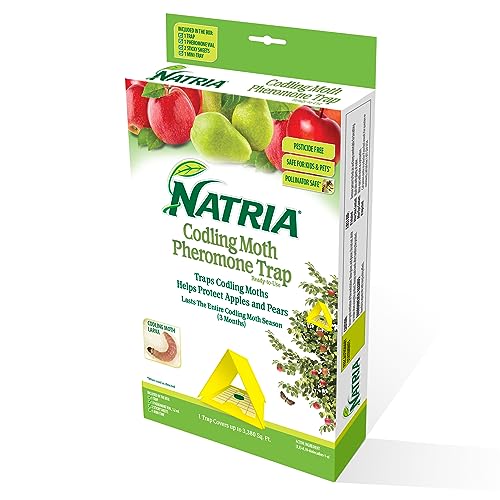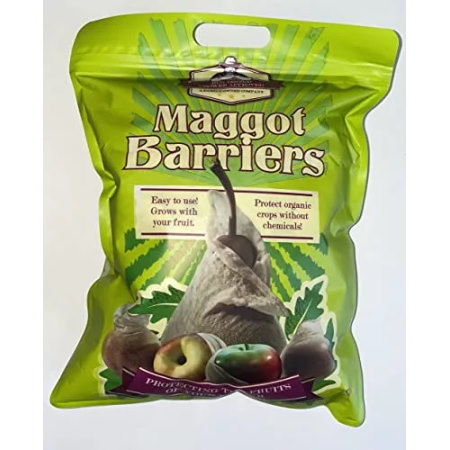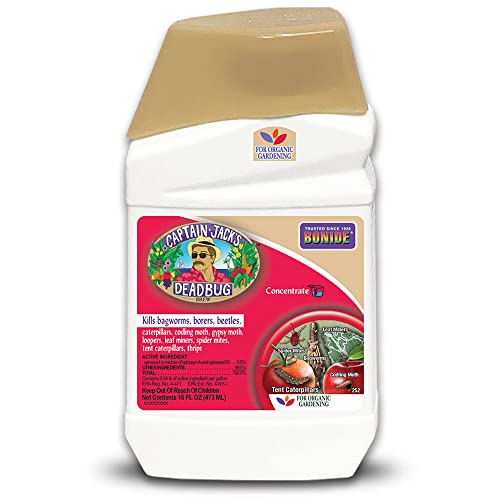Worm holes in your apples? Discover how to identify and treat codling moth to avoid a ruined apple harvest
Expert tips to spot apple moths and the best ways to control them in your yard
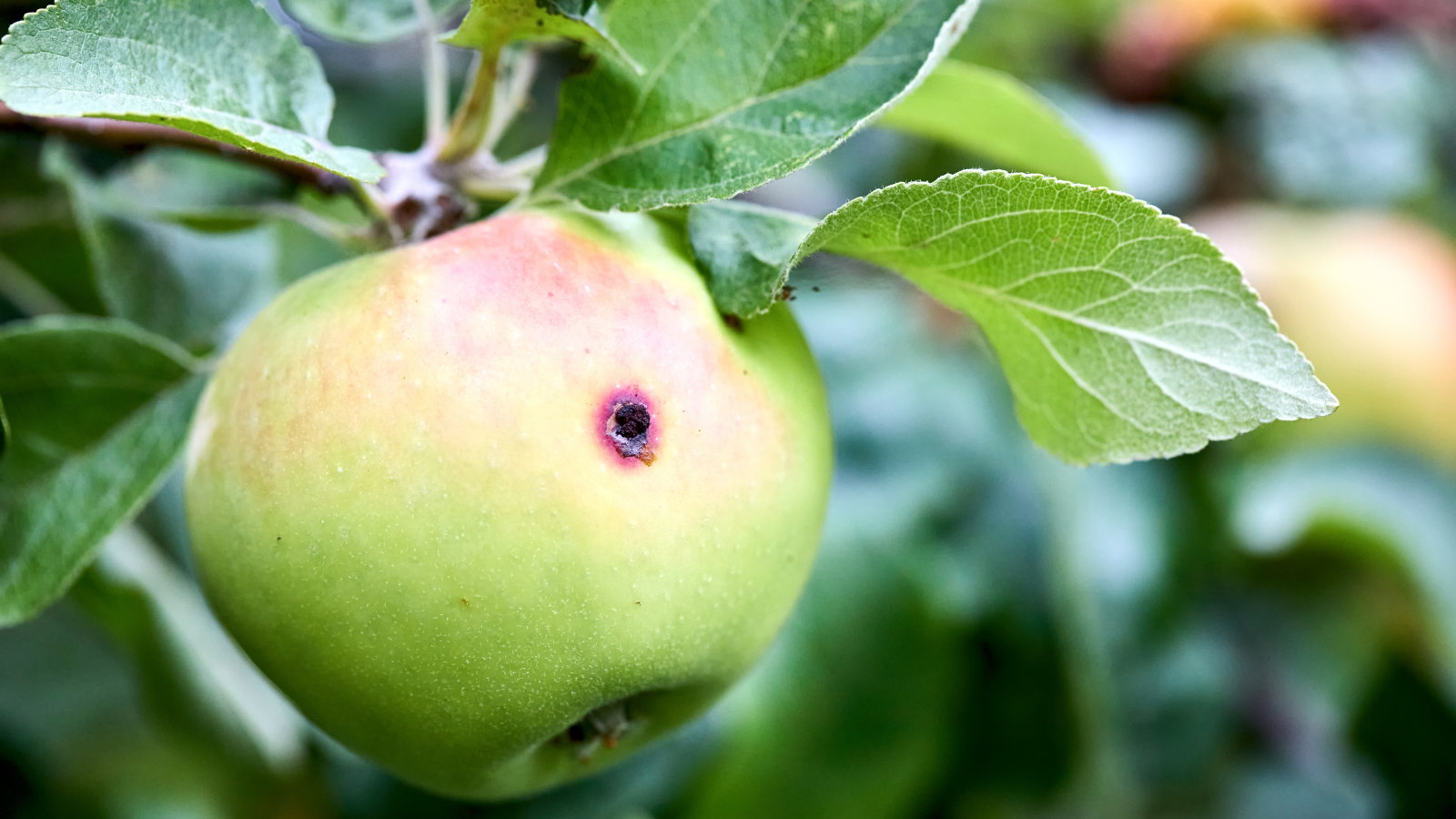

The codling moth (Cydia pomonella) is a highly problematic pest for fruit trees, predominantly apples and pears. The larvae of the codling moth eat and burrow their way into developing fruits and have a devastating effect on any potential harvest.
Codling moths become active in spring and particularly target young fruits, making them unsuitable for eating and needing to be thrown away. Fruit tree growers may face multiple generations of the apple moth each year and large numbers of apples can be ruined if the pests are not managed properly.
If you plant apple trees, it is important to understand the dangers of codling months - so we are here to help. We look closely at how to identify the pests and spot the signs of codling moth damage, together with the best methods of codling moth control to consider at home.
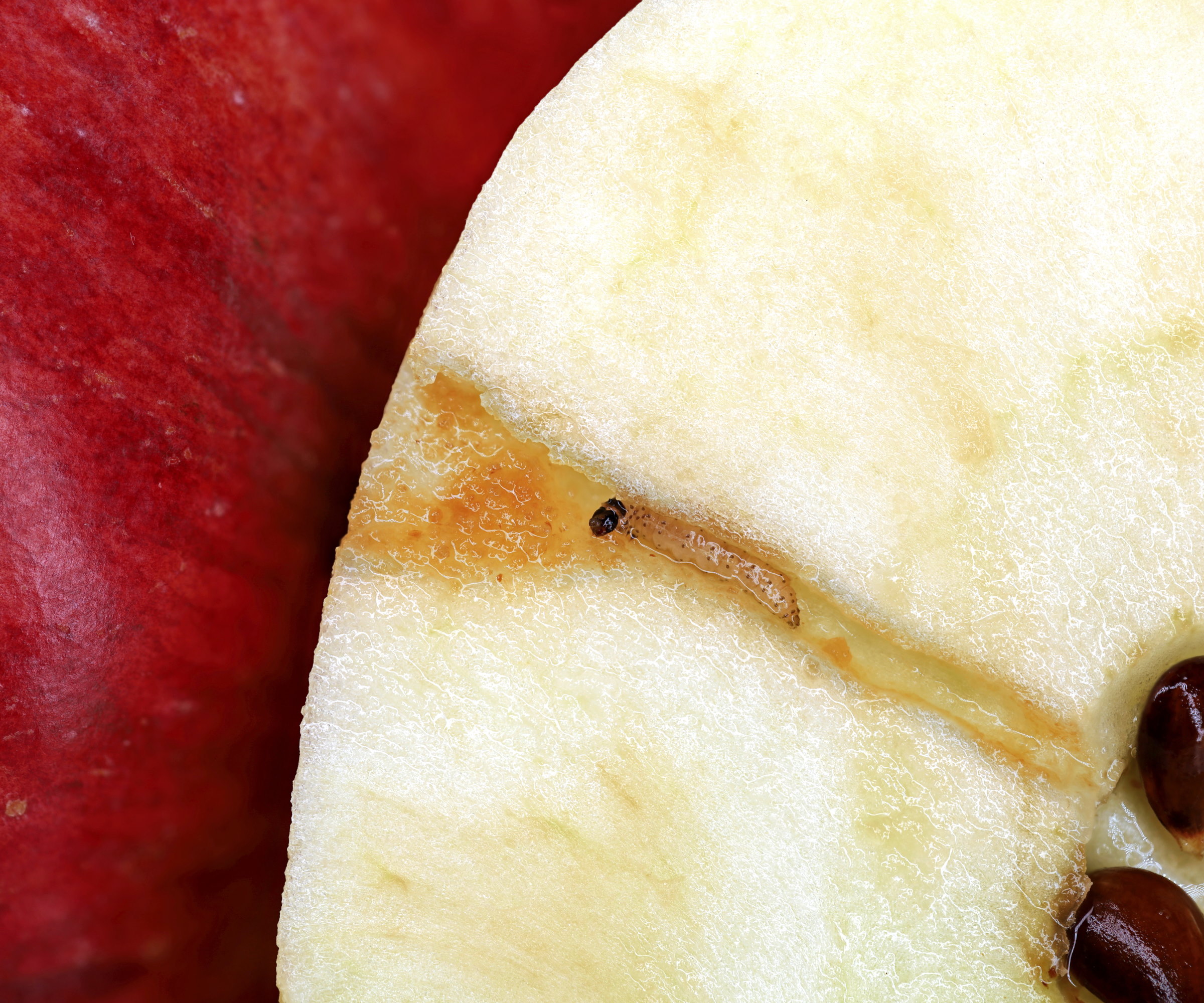
Codling moth larvae will eat tunnels through an apple
A guide to the apple codling moth
Along with pruning apple trees annually, and fertilizing apple trees to keep them healthy, spotting and dealing with pests, including codling moths, quickly is important to help get a great harvest year after year. Our guide to codling moth control includes tips from an experienced fruit tree expert to help you identify and manage these troublesome pests.
What are codling moths?
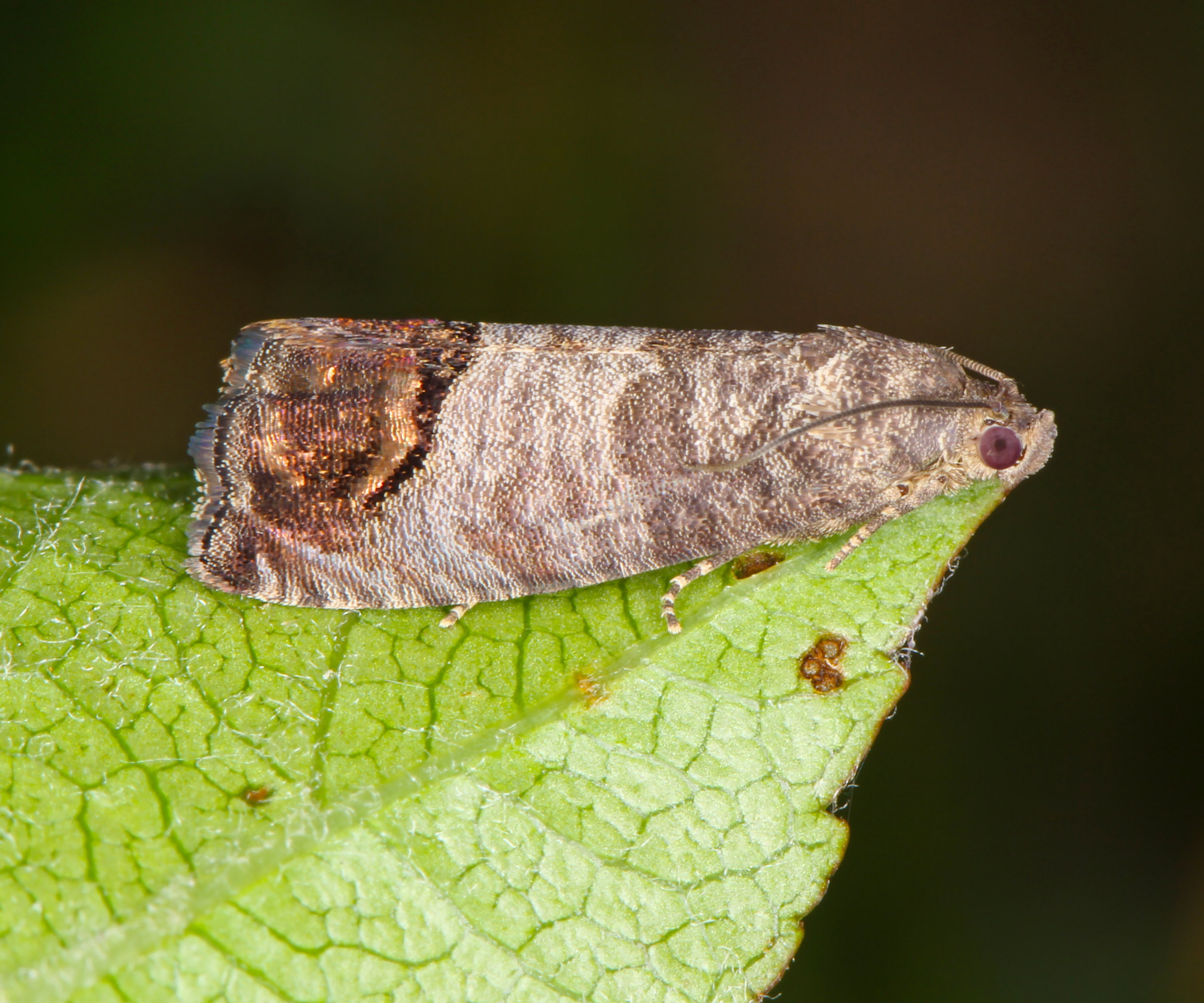
Codling moths will start to lay their eggs in spring
‘Codling moths are a significant pest for apple trees, often causing the classic ‘wormy apple’ problem many homeowners face,’ warns Susan Poizner, author and creator of Orchard People. ‘The codling moth larvae, which are small worms, burrow into apples as they grow, ruining the fruit. While apples are their primary target, codling moths can also affect pear trees.’
Adult apple codling moths are around half to ¾ inches long with brown-grey wings and a distinctive coppery band of scales at the tips of their wings. The codling moth larvae are worm-like and light in color, white-to-pink with a darker brown or black head. The larvae of the codling moth hatch from small white eggs laid on developing fruits.
The codling moth overwinters in spring to lay its eggs and, upon hatching, the larvae start to chew their way into the fruit. The codling moth larvae cocoon once reaching full size, often underneath bark or under debris near the tree’s base.
Design expertise in your inbox – from inspiring decorating ideas and beautiful celebrity homes to practical gardening advice and shopping round-ups.
Early generations will produce another that season, while later ones will appear in spring to start the cycle again. The codling moth life cycle can be rapid. The speed depends on the temperatures and apple tree owners in warmer climates may face up to three generations per year.

Susan is an urban orchard-ist, ISA Certified Arborist, and the author of two fruit tree care books, Growing Urban Orchards, available at Amazon and Grow Fruit Trees Fast, also available at Amazon. She is the creator of the award-winning fruit tree care training website Orchard People and trains global fruit tree growers through her online courses
The signs of codling moth damage
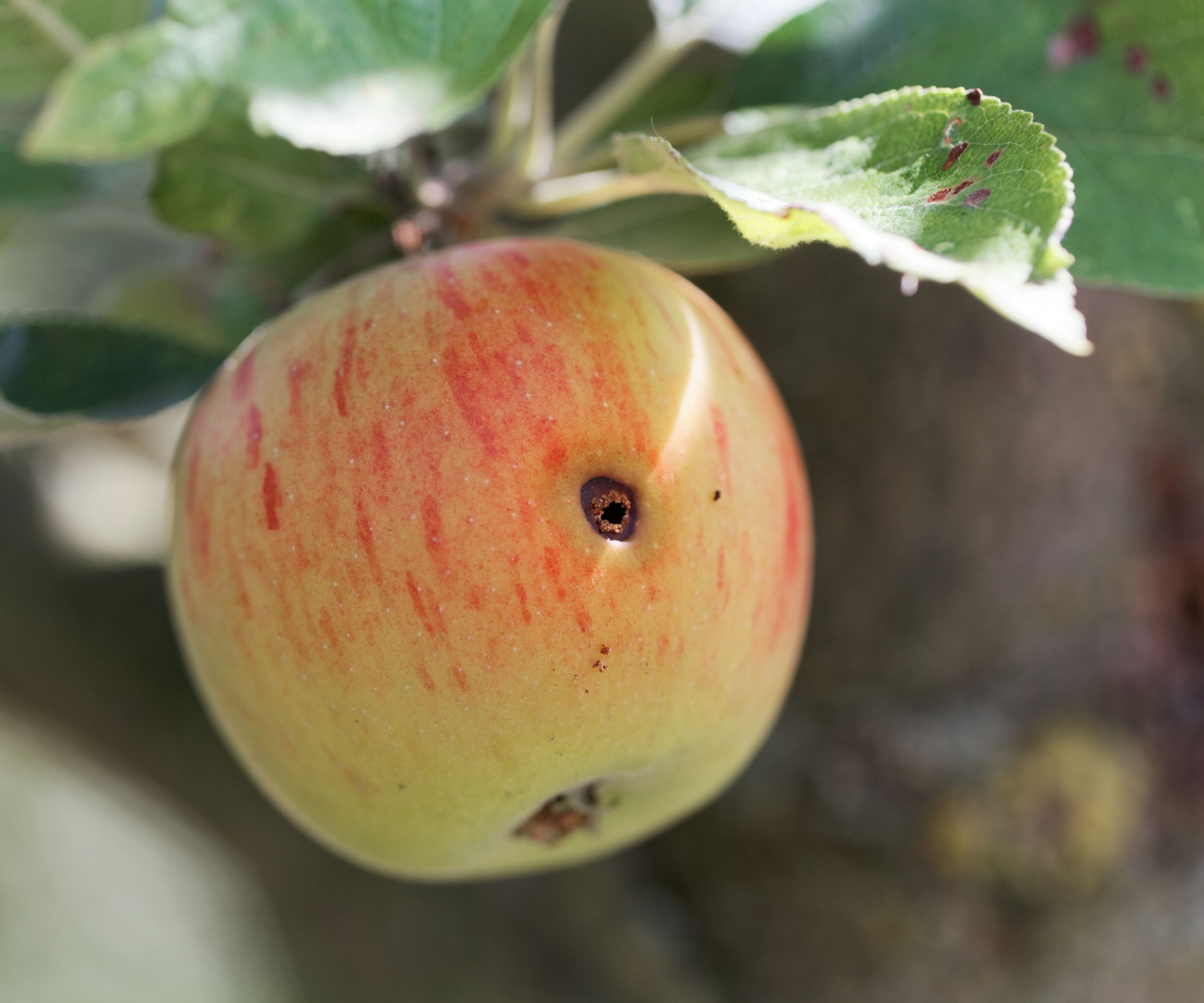
Distinctive holes are a sign of codling moth damage
Codling moth damage is often visible early in the season when the apples are small. The distinctive tell-side sign of apple months can be seen on close inspection of the surface of the developing apples.
‘Look for small holes in the fruitlets with a bit of oozing goop - this is actually frass, or codling moth poop,’ advises Susan Poizner. ‘The eggs are laid just under the fruit's skin, and as the apples mature, so do the larvae, leading to the familiar wormy apples at harvest.’
The codling moth bores holes into the apple’s core and then exits the fruit again, leaving larger holes as they leave. Upon cutting open an affected fruit, you will see the tunnels they carve out and more frass.
Fruits damaged early in the season tend to ripen and fall prematurely and, if no codling moth control is put in place, they can infect large numbers of the fruit. Damaged fruits should be discarded and not added to your compost, as the moth could overwinter in the compost pile.
Tips for codling moth control
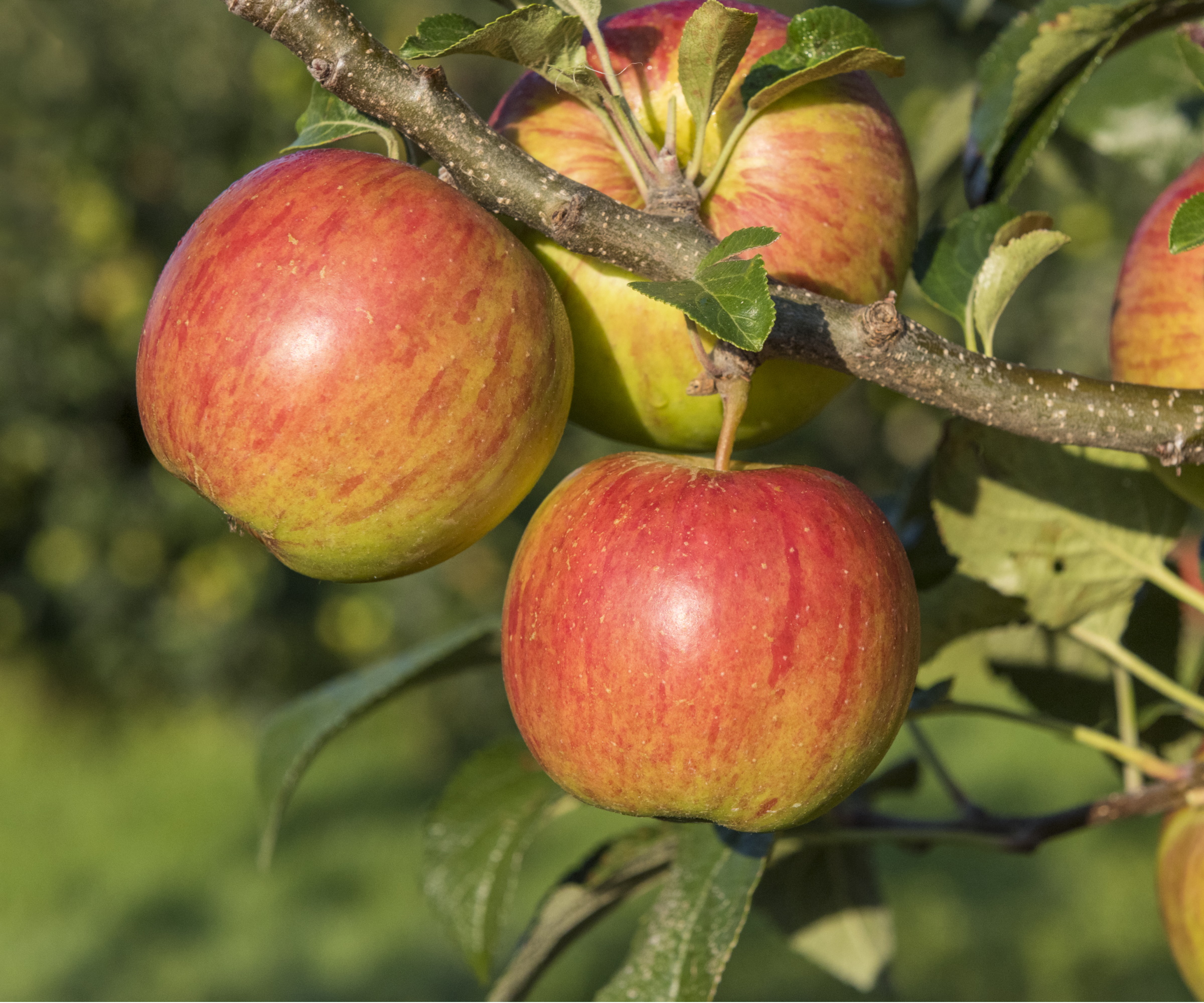
Codling moth can wreck an apple harvest if left untreated
There are several methods to control codling moths and many do not require the need for insecticides. The first proactive method is to look for fruit tree varieties less susceptible to codling moths. Early-maturing varieties are less vulnerable to codling moth damage when compared to later-maturing ones, so opting for such types can be beneficial if you intend to plant fruit trees on any scale, from an orchard to growing fruit trees in pots.
Codling moth pheromone traps can be used to track the apple moths and impact the number of males to reduce the amount of mating occurring. The pheromone traps are open-sided and contain a sticky sheet. A pellet containing a synthetic scent that imitates the female codling month’s pheromones is placed onto this sheet, attracting males to the trap and getting them stuck inside. The codling moth pheromone traps want to be hung in spring and checked weekly.
Susan Poizner recommends an alternative chemical-free method of codling moth control by using maggot barriers, or ‘orchard sox’. ‘They are small nylon sleeves that fit over baby apples when they're about the size of a quarter,’ explains Susan. ‘These barriers prevent insects from laying eggs on the fruit and expand as the apples grow, ensuring clean, worm-free fruit by the end of the season.’
Other non-chemical or natural pest control methods to control codling moths include removing fallen apples and plant debris through the season to remove habitats for the pests to pupate or overwinter in and utilizing companion planting to attract beneficial insects that are natural predators of codling moths.
Using a codling moth spray should be a last resort, however, even when using such products, getting the timing right is key to success. They must be applied when eggs are laid and hatching as the larvae are protected once they enter the fruit. Products such as carbaryl and spinosyn can be applied at intervals of 10-14 days but should be used with caution as the sprays may also damage the natural enemies of the codling moth.
Shop codling moth control
FAQs
When to put codling moth traps out?
The best time to use codling moth traps is in early spring. The exact time to put them out can range from March to May, depending on your location, as the adult apple moths will start to become active earlier in warmer climates. The codling moth traps want to be out before the first blooms open on the apple tree.
What are the natural enemies of the codling moth?
The likes of earwigs, assassin bugs, ladybugs, lacewing, parasitic wasps and birds can help control the codling moth population. Planting herbs such as dill and fennel can be a good way to attract ladybugs, parasitic wasps, and more beneficial predators.
How do you make homemade codling moth traps?
In the same way as making homemade bug sprays to deal with many common garden pests, there are recipes available to make a homemade codling moth trap. The most common of these involves using a plastic milk jug or bottle that has been cut open. Mix a cup of vinegar and half a cup of molasses into the container and fill with water. Hang the DIY codling moth trap on the fruit tree and the pests should be attracted to the odor it emits.
It is important to check all apples closely at harvest time to store only the best apples. Any apples infected by codling moth should be discarded and all stored apples inspected closely to remove any that show wormholes that may have been missed. Store apples laid out in trays and not touching each other and check the apples often to discard any damaged or going soft.

Drew’s passion for gardening started with growing vegetables and salad in raised beds in a small urban terrace garden. He has worked as a professional gardener in historic gardens and specialises in growing vegetables, fruit, herbs, and cut flowers as a kitchen gardener. That passion for growing extends to being an allotmenteer, garden blogger, and producing how-to gardening guides for websites. Drew was shortlisted for the New Talent of the Year award at the 2023 Garden Media Guild Awards.
